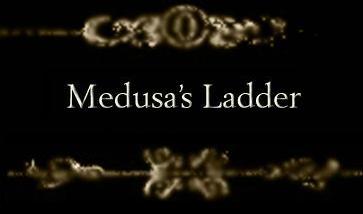|
|
|
|
|
|
|


The Treachery of Images, Part II: This is not a Killer
My husband recently acquired a large Victorian-era album full of family (a stranger's family, that is) photographs. The gift inscription in the album dates it to 1893, and all the photos have local (New York) studio stamps. All but one, that is.
While perusing the album for the first time, I came across a photograph that stood out among the many; it just seemed 'off' somehow. Superficially, the portrait is quite unremarkable—an infant in a chair. There's something in the baby's gaze though, that seems too old, too confident. That confidence is belied by a slight slumped posture, a droopy mouth—all translating somehow into trouble.
I wondered if this could be a postmortem photo—a Victorian practice of commemorative, memorial photography. I've seen examples in which the subject is obviously deceased, but there are plenty of such photos (usually children) in which the subjects appear in every way to be living. The effect is quite chilling.
I removed the baby photo from the album to see if there were any notes or indications on the back. Nothing. Although I'm not sure what I hoped to uncover with an internet search, I typed in the only words I found upon the photo—the name and location of this out of place, 'foreign' photography studio—Van Alstine, Red Oak Iowa. For good measure, I also typed in the term "photographer."
What came up was startling—a page with the words Axe Murders blazing across the screen. It was also slightly serendipitous—my husband is reworking the photographs in the album to reflect the family's darkside—a 'vintage fiction' art project of sorts. And the idea of 'axe murders' really fits in with what he has assembled so far.
Intrigued, I began reading the page and doing some further searches, and quickly realized I had heard about this case—the infamous, still-unsolved Villisca Axe Murders, in which 8 people were murdered. It appeared in my search because there was a suspect, a farmer, named Van Alstine from nearby Red Oak. The case is crazy and epic, filled with bizarre twists, several dubious confessions, several arrests. And it probably has nothing to do with our photograph.
But in reading about the case, I came across an item that has a bit to do with the idea of photography and the esoteric. Within a genealogy site, there's a page someone has posted with various (unsourced) newspaper articles regarding the murders:
Slayer's Image in Eye - Photograph of Iowa Murderer is Obtained From Retina of a Girl Victim.Council Bluffs, Ia., Aug. 21, 1912 -- C.M. Brown of Villisca, Ia., who is in this city, declares that the detectives at Villisca, working to solve the mystery in the recent murder of eight persons in Villisca have obtained a photograph of the murderer from the retina of the eye of one of the Stillinger sisters. The girl, circumstances at the time indicated, was the only one of the eight, all of whom were killed with a hatchet, who had awakened during the attack.
I knew I had heard of this idea before, maybe in a Sherlock Holmes story, or maybe something to do with Jack the Ripper. But, it appears the article above is reporting it as fact. Obviously, a photograph was not really obtained from the retina of one of the unfortunate Stillinger sisters—so is this simply an example of sensational journalism, or could this idea of having a photograph of the killer been used as some kind of tactical device by the authorities? The lack of any sort of explanation attached to the outrageous claim seems curious. I decided to investigate a bit.
I found an excellent history of the so-called 'optogram' by Arthur B. Evans in an online article entitled Optograms and Fiction: Photos in a Dead Man's Eye in the journal Science Fiction Studies. According to Evans, the notion that photographs could be obtained from retinas was a popular scientific and popular belief well into the 20th century. Unsurprisingly, the belief sprang into being alongside real photographic technology, and left when that technology began to be commonplace, and perhaps, less 'magical.'
Evans's article is certainly required reading for anyone who remotely finds the idea of optograms interesting. The optogram was apparently a fairly common literary device in Victorian fiction, and, according to Evans, a precursor to the later, very prevalent sci-fi 'brain-scan' device.
For me, the idea of optograms, although novel, bring up some larger questions about the nature of reality, truth, objectivity, subjectivity, reliability, modernity, etc. And, ultimately, I suppose, since the idea of imagery itself underlies the notion of optograms, I wonder if these larger questions should extend to the larger idea of the Image.
In reading some of Evans's examples, there seems to have been an assumption that any recovered imagery would have unquestionably revealed a factual, damnable account of reality—of real events. There's a huge sense of infallibility—'seeing is believing.' Would this float now—in our age of aesthetic cleverness--of photoshop, the visual assault of television, our generally ADHD modern visual world? And, if the idea of the infallibility or reality of optograms wouldn't float now—is it because we are more sophisticated, or simply more jaded?
Further reading:
Villisca Axe Murders at the Crime Library
Secure the Shadow: Death and Photography in America, Jay Ruby, ISBN 0262181649
Sources:
Optograms and Fiction ..., Arthur B. Evans
Visit Richelle's blog: Beamships Equal Love